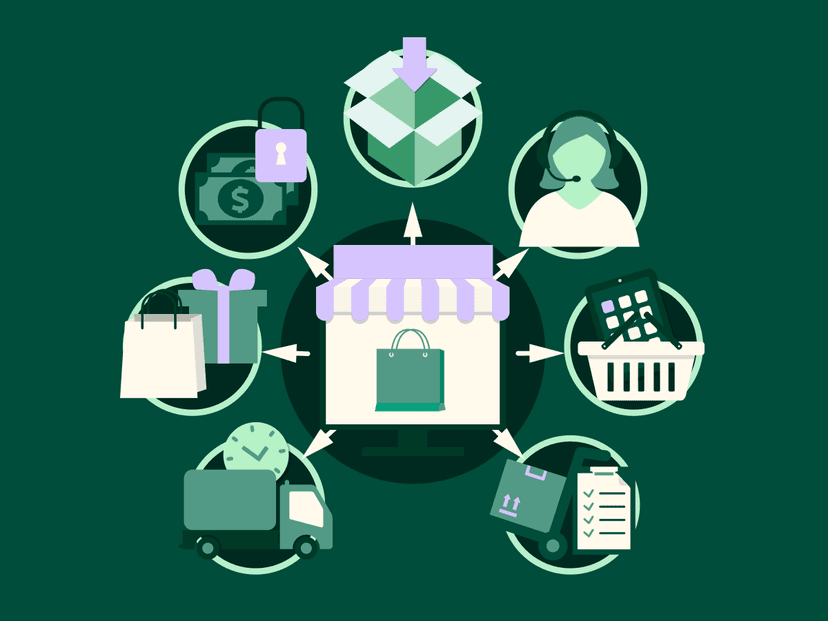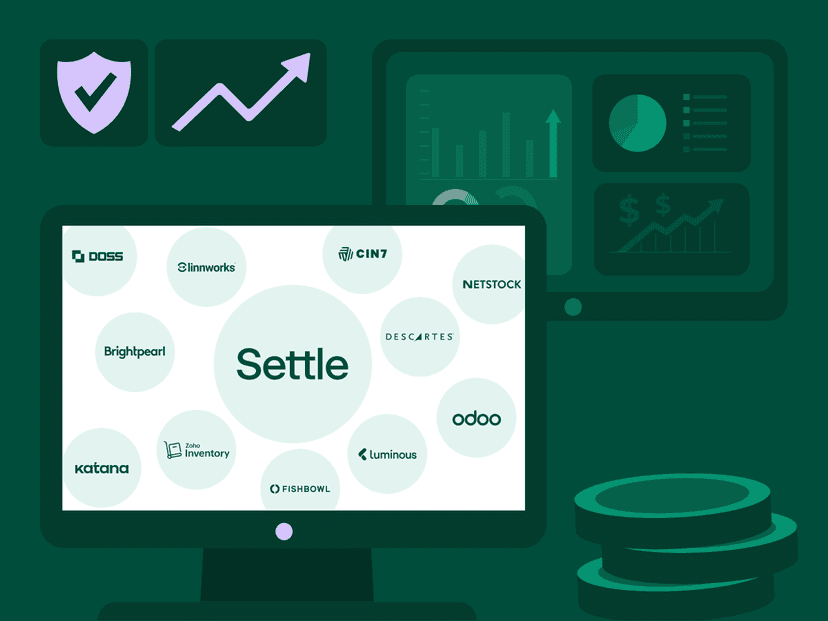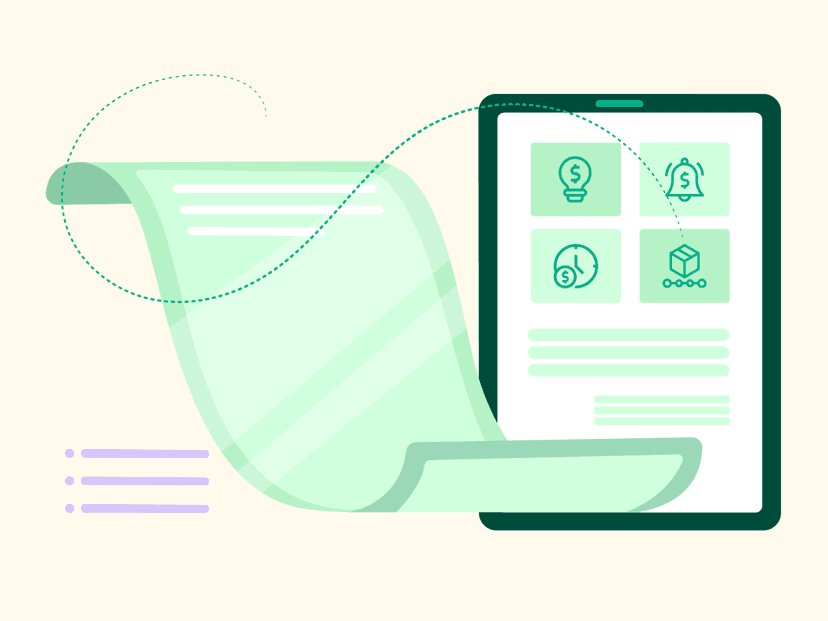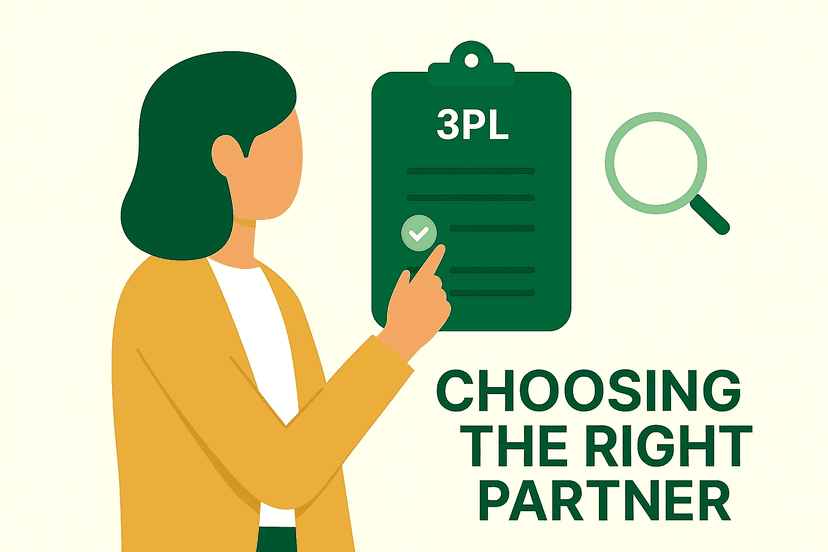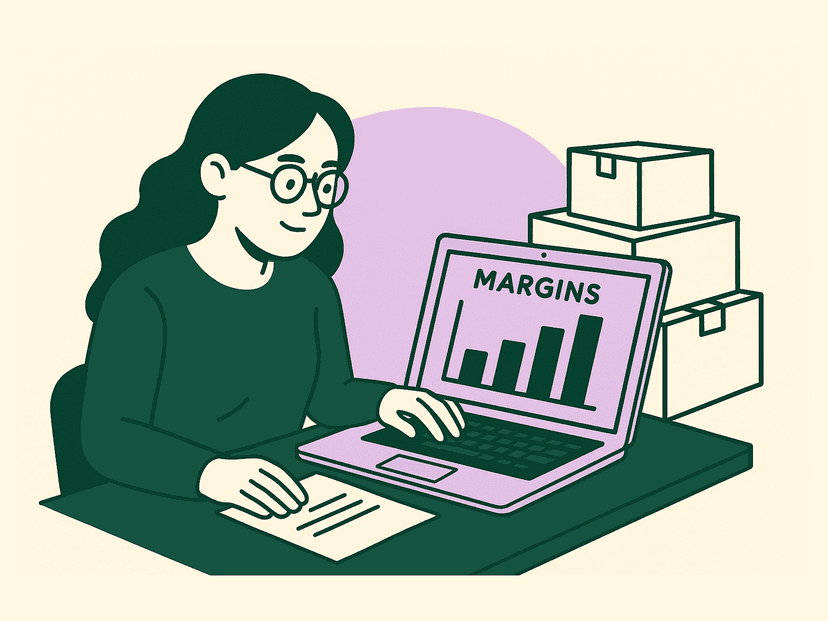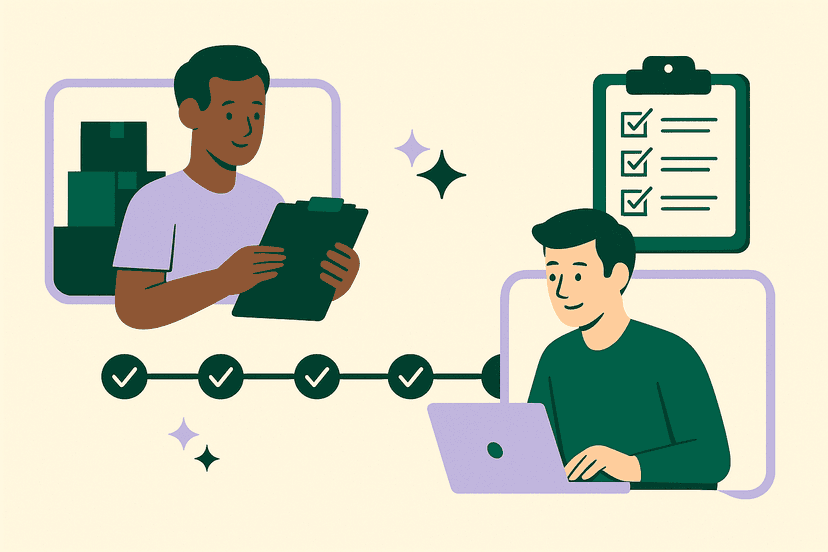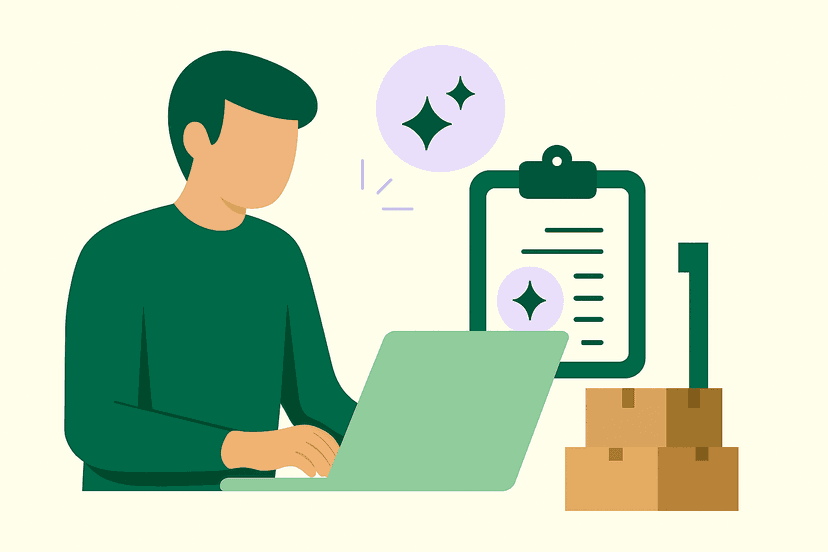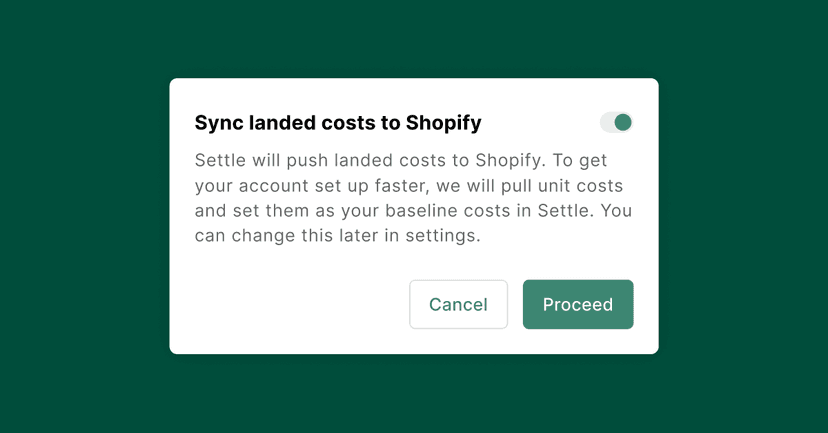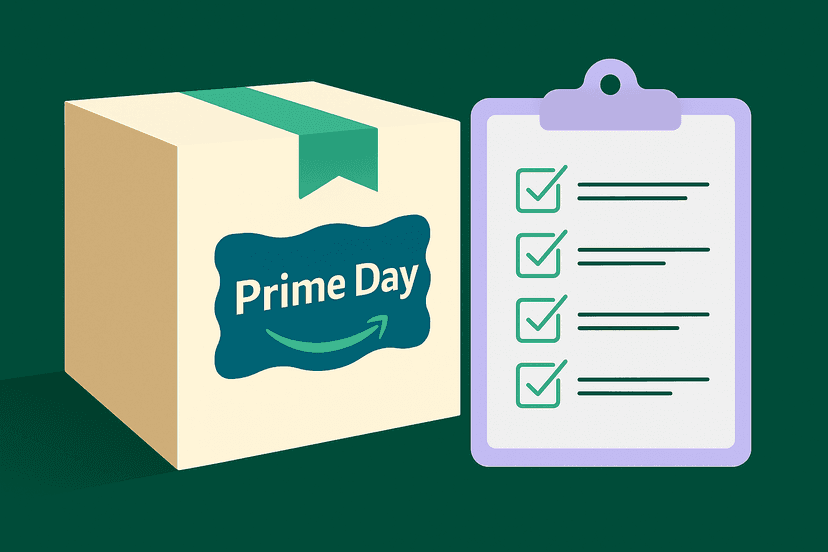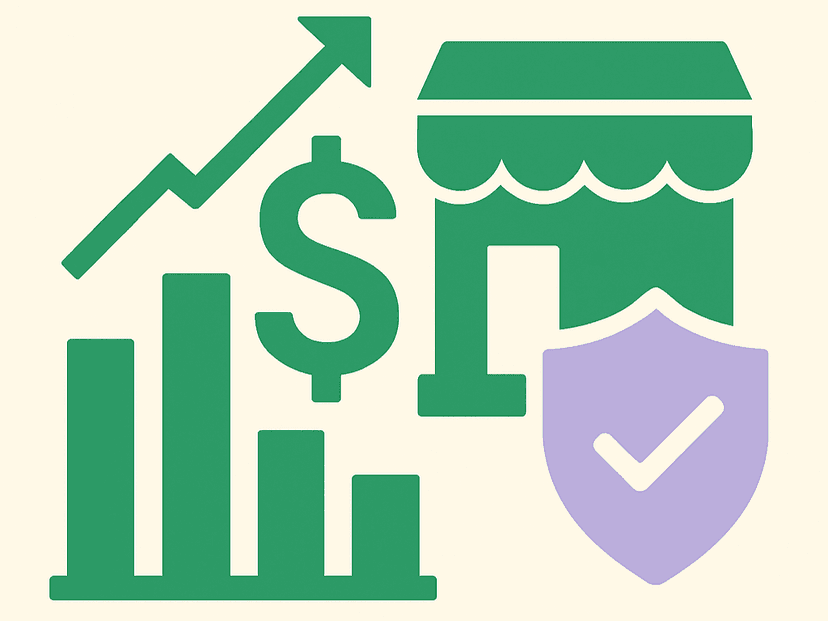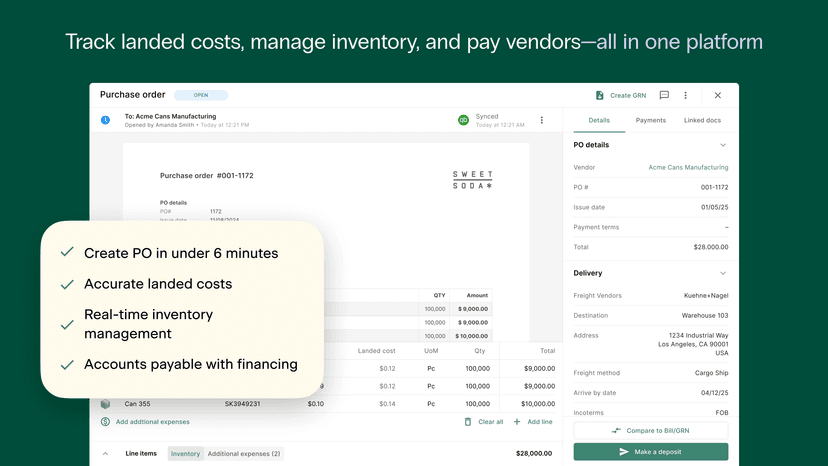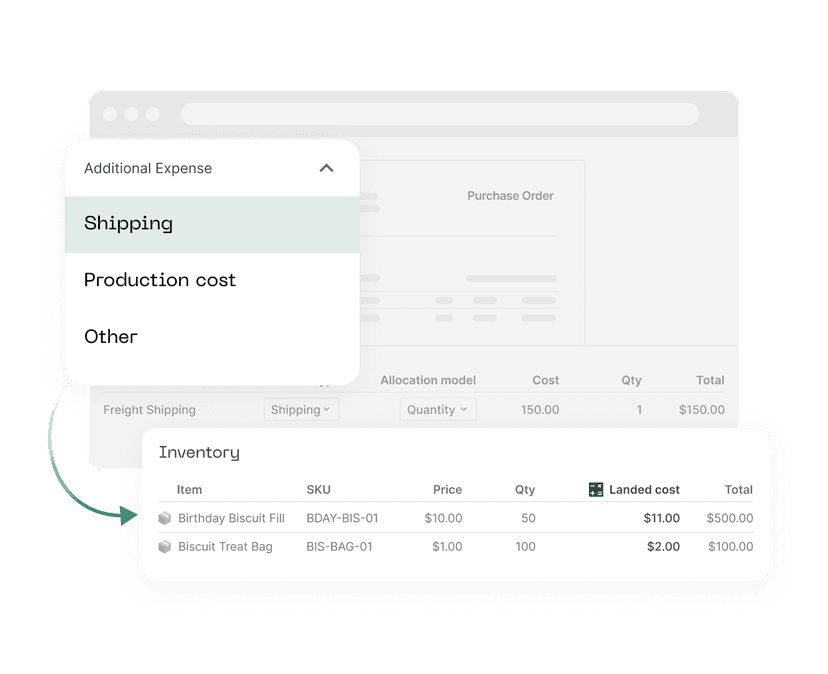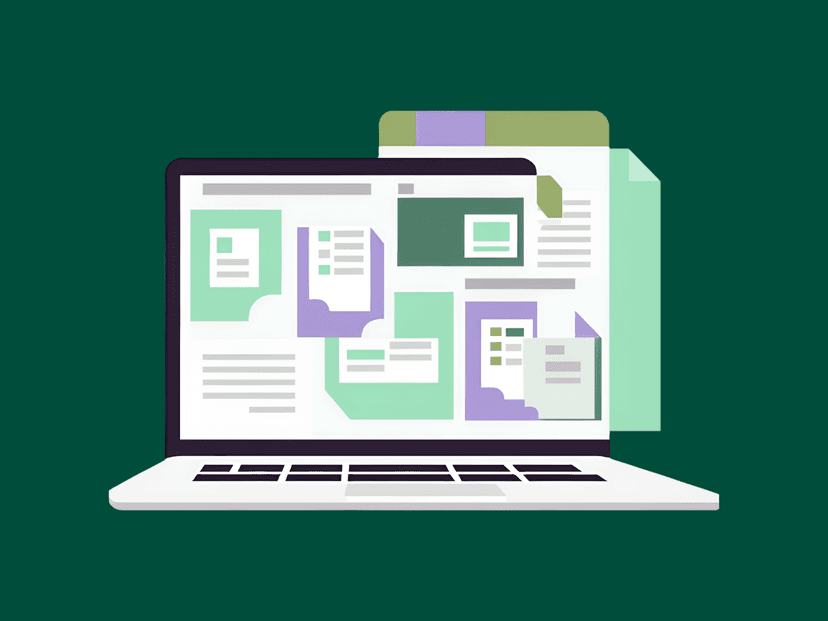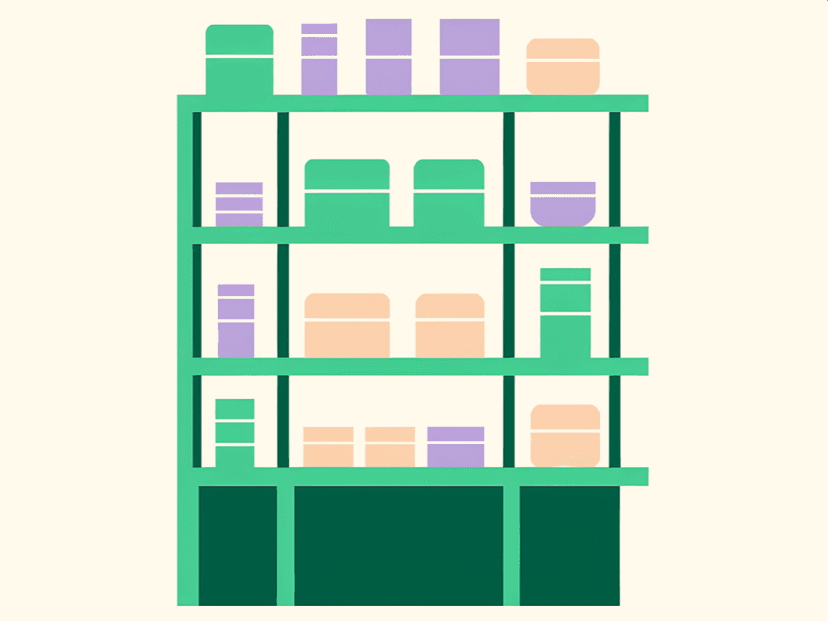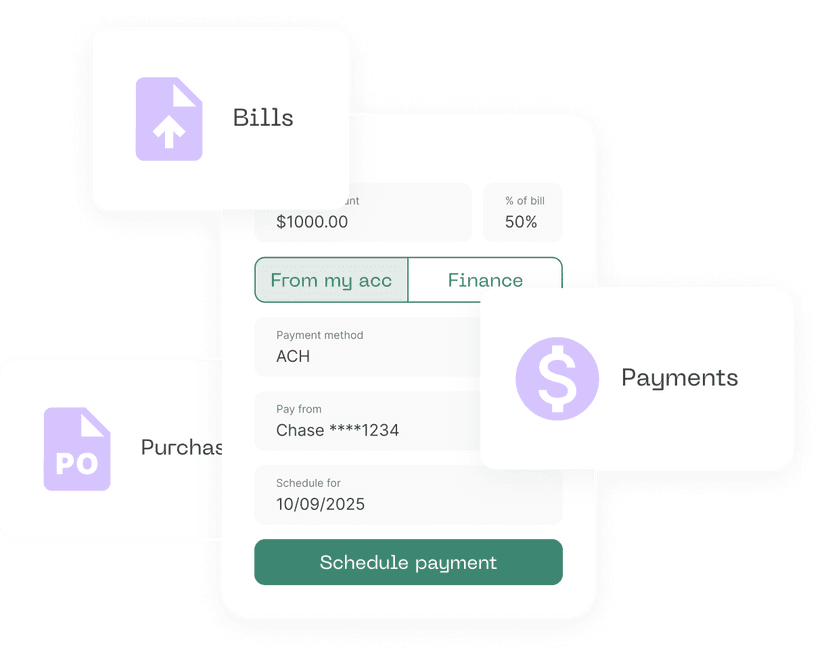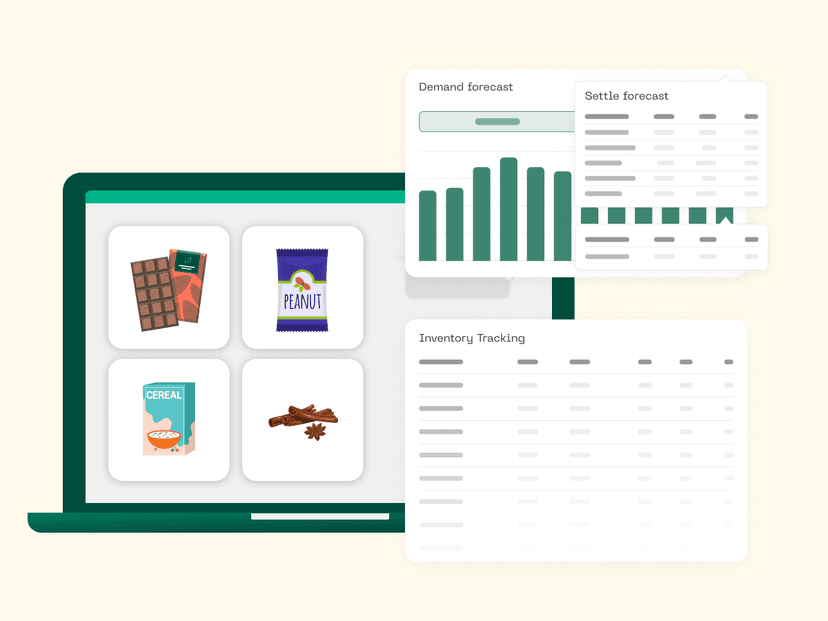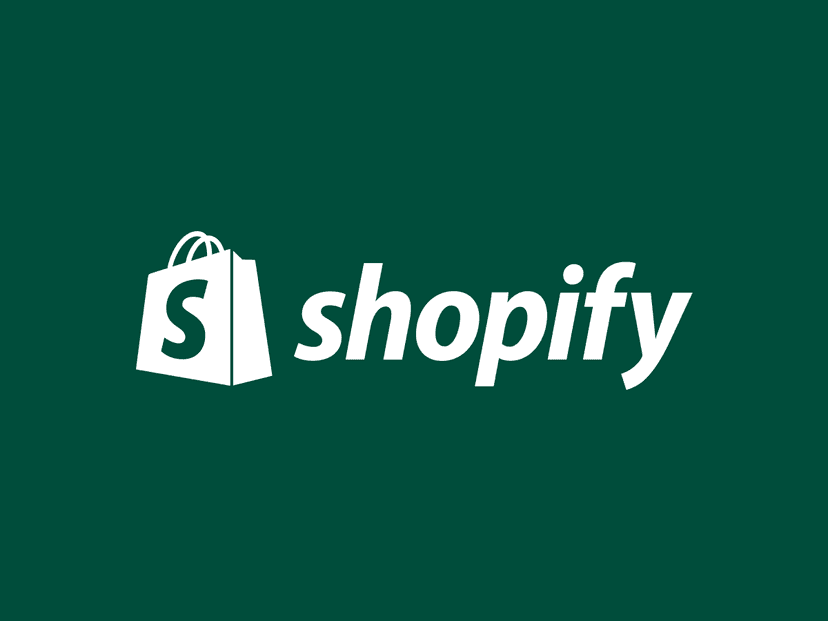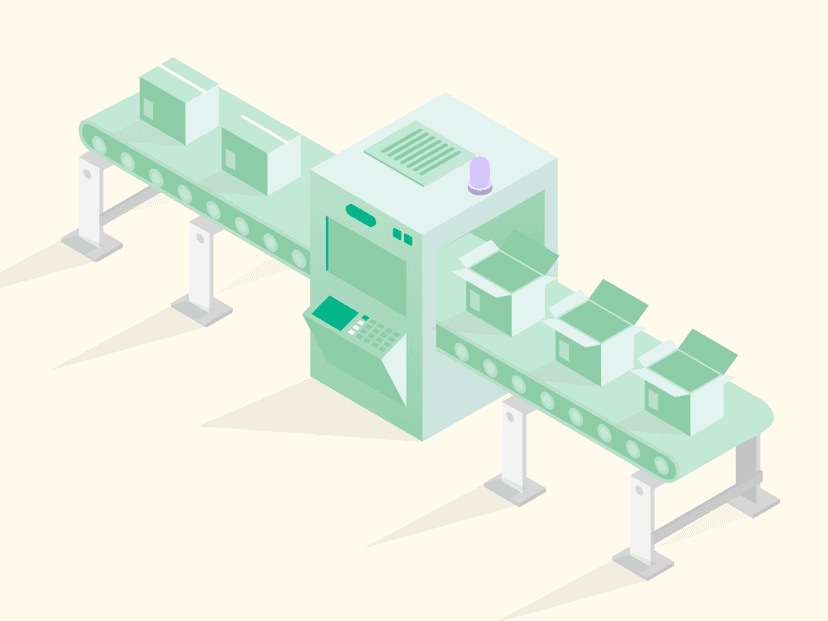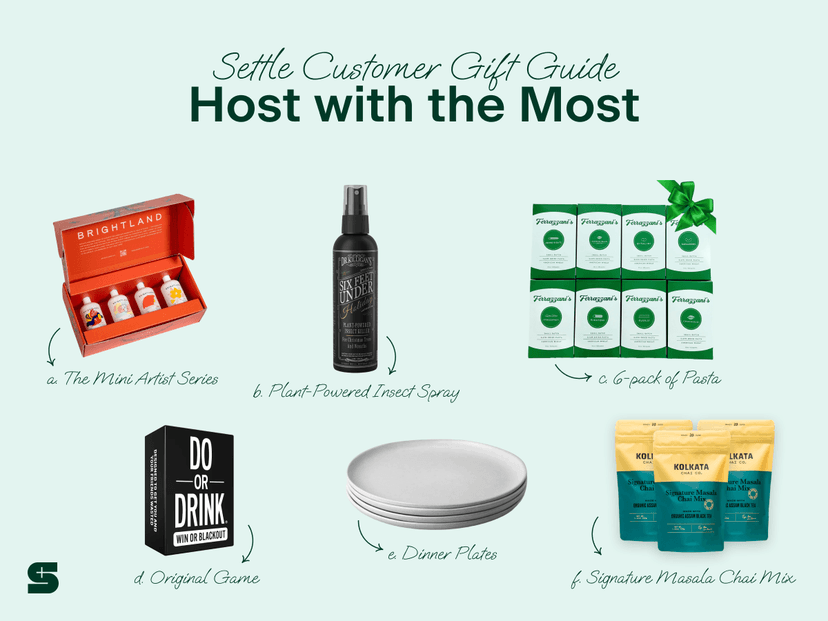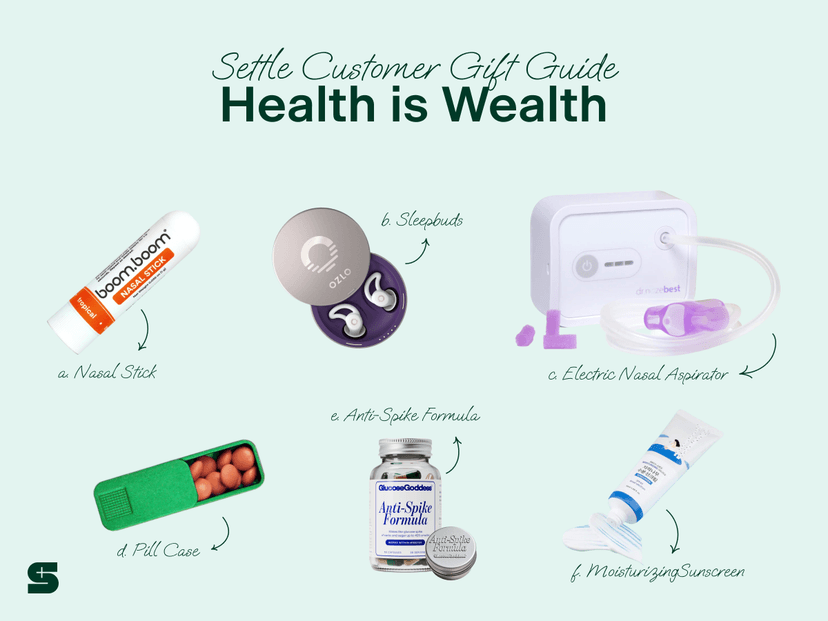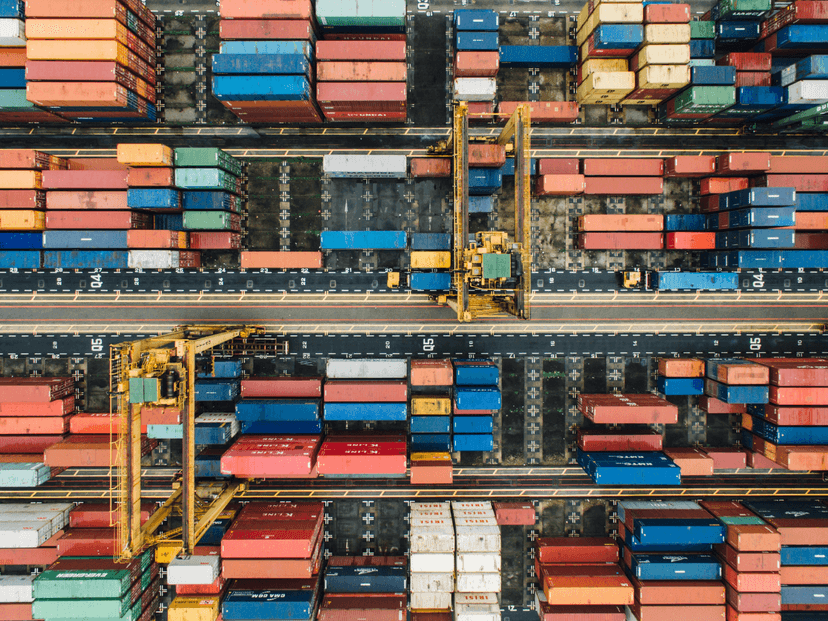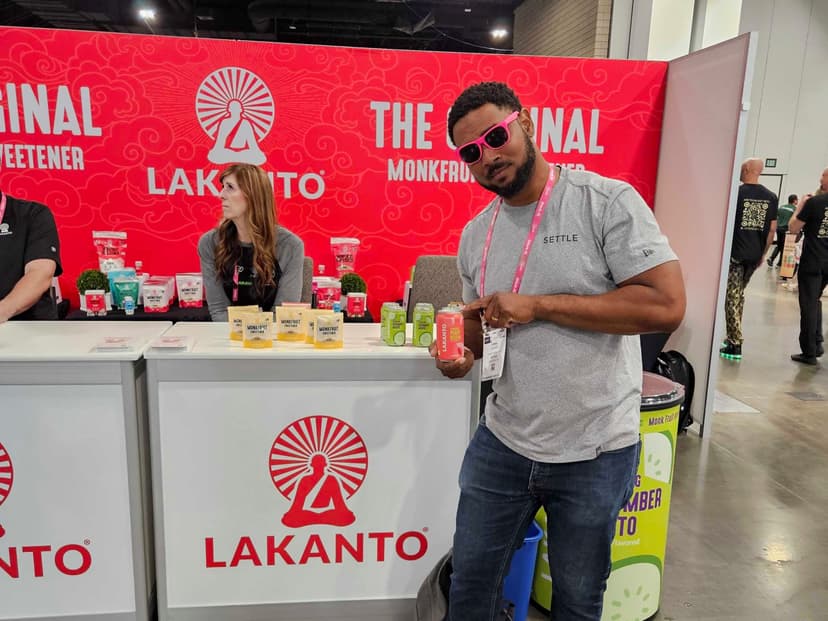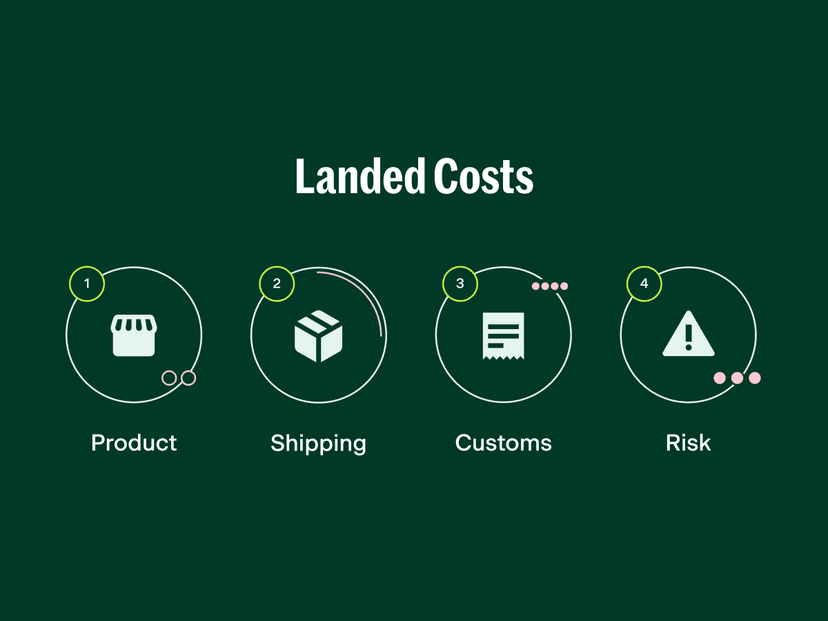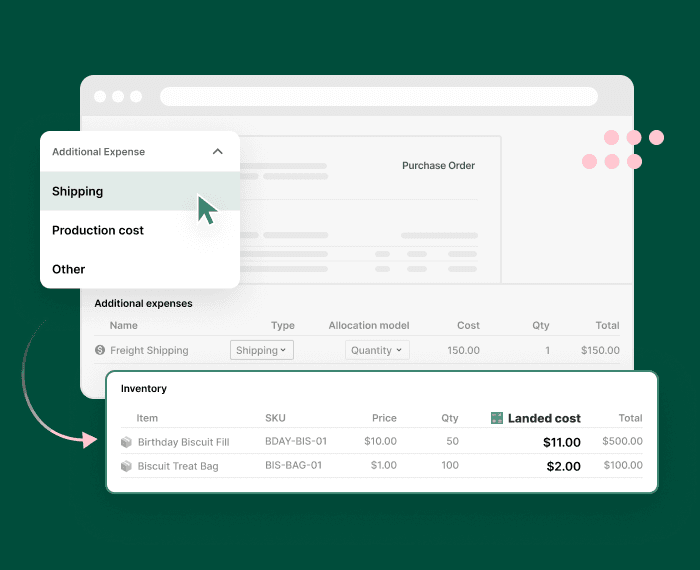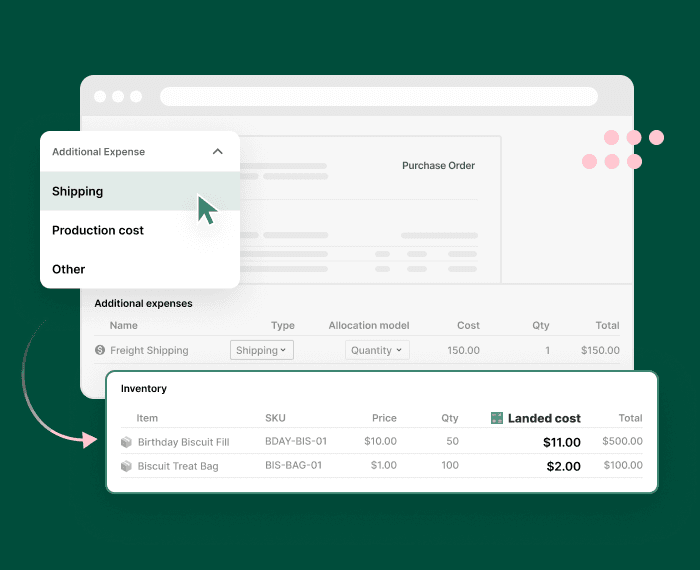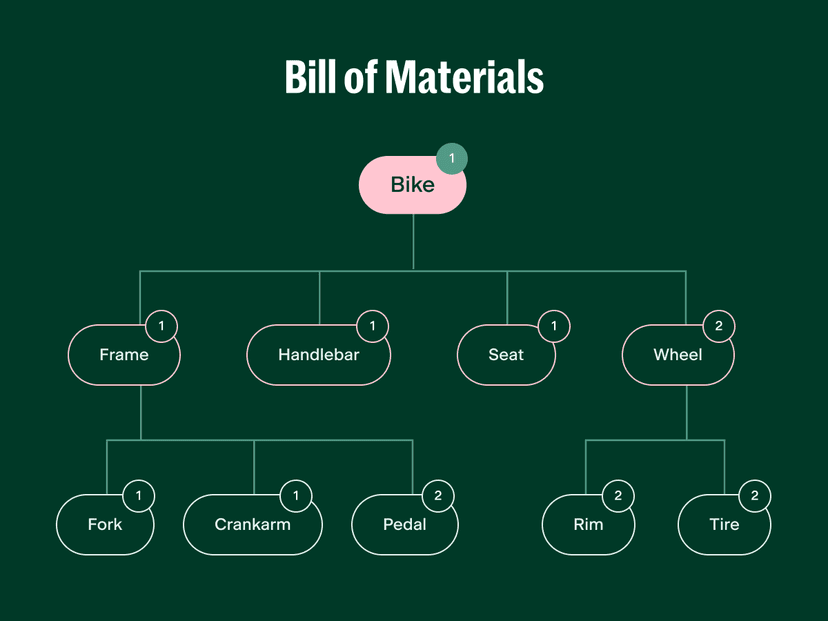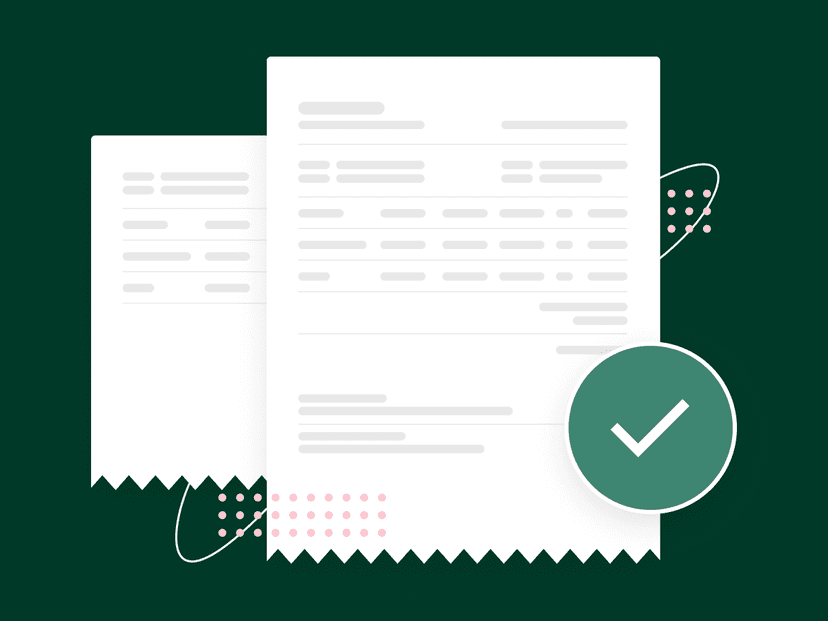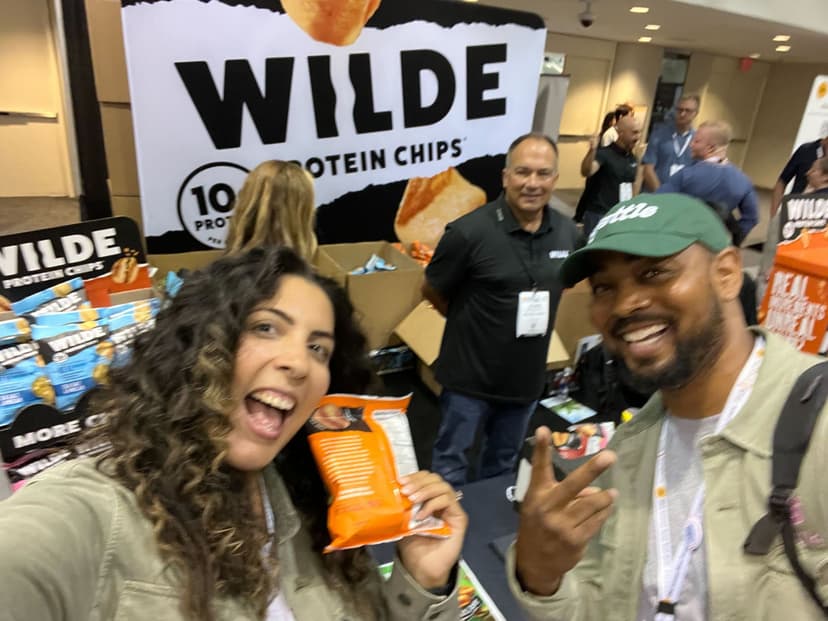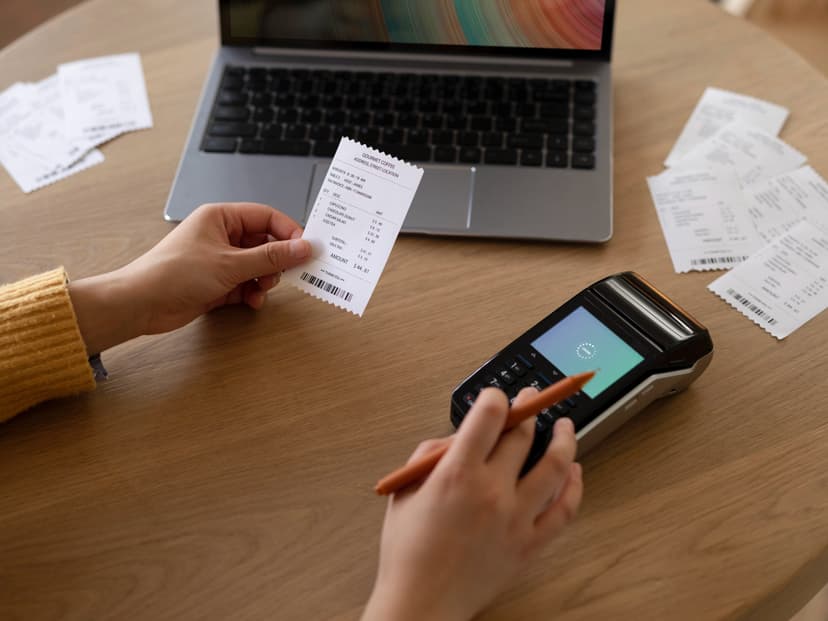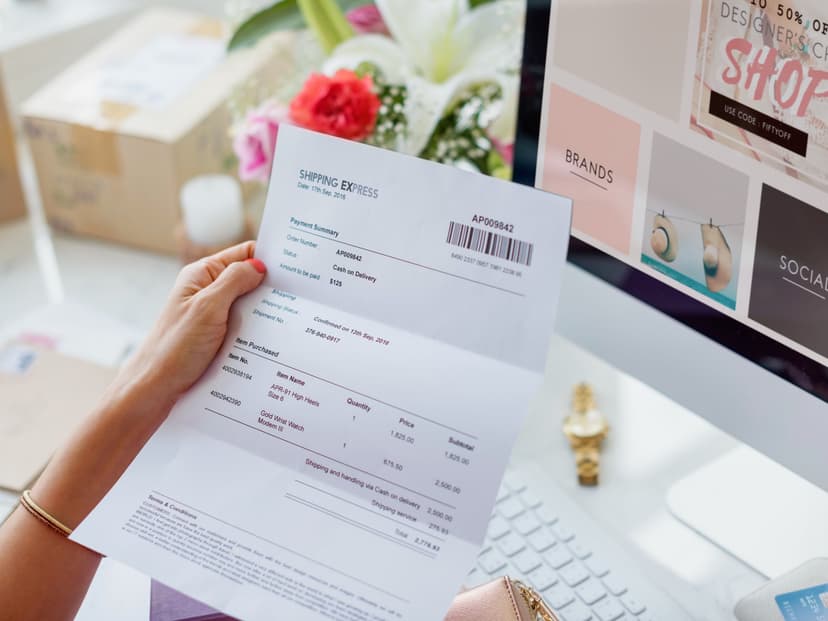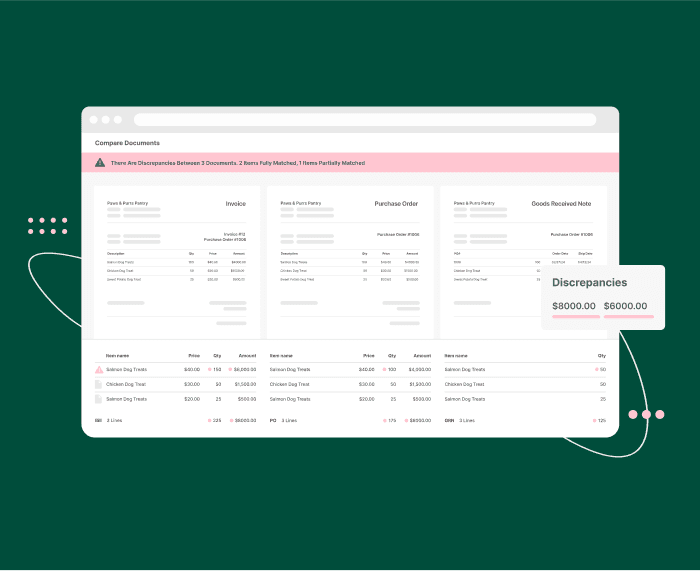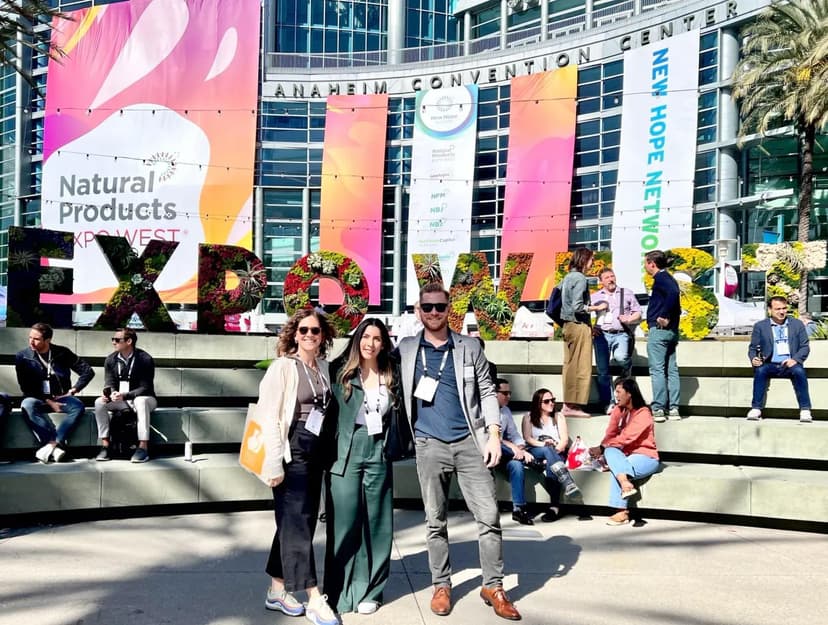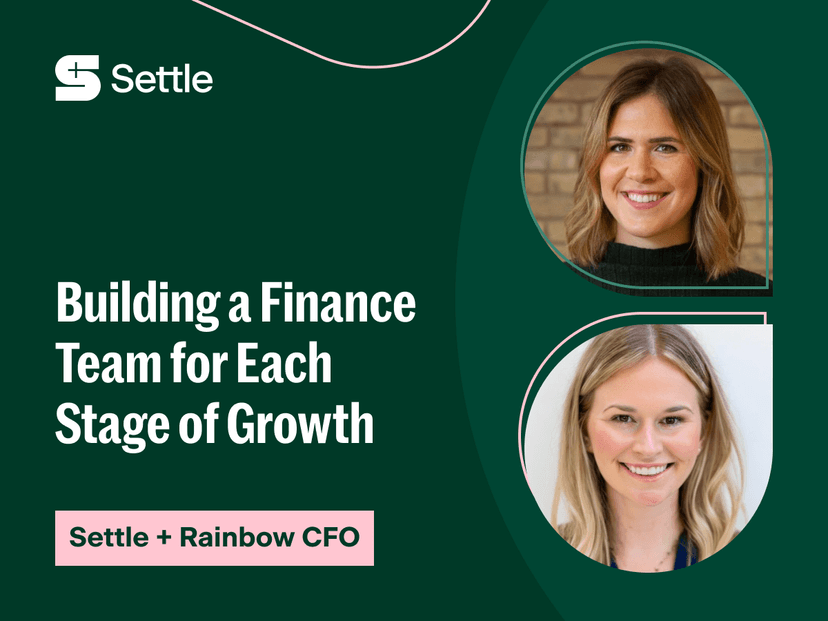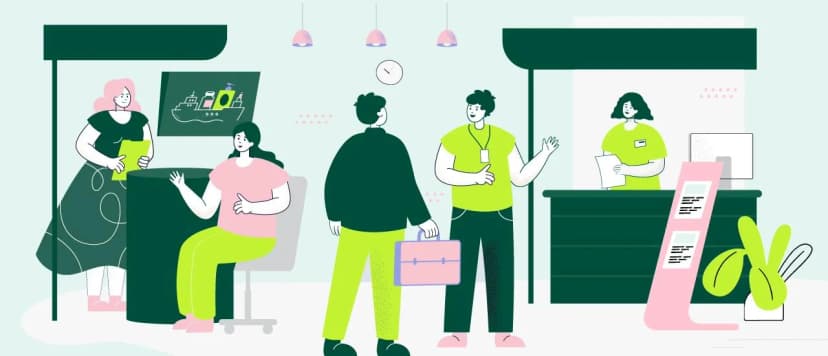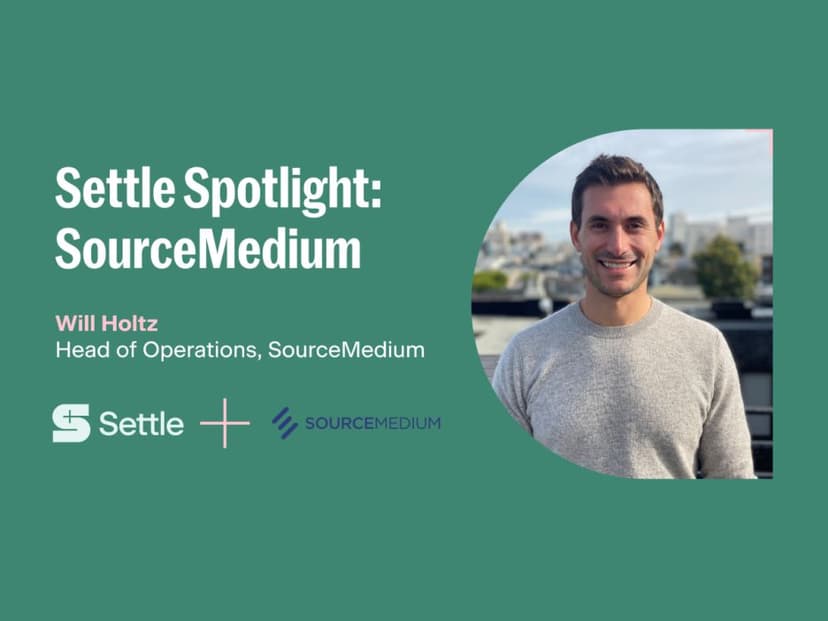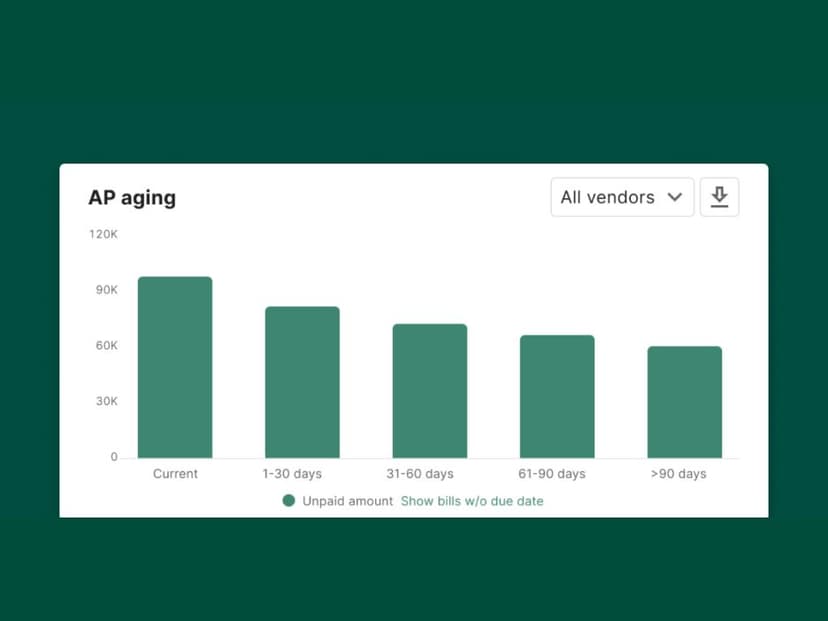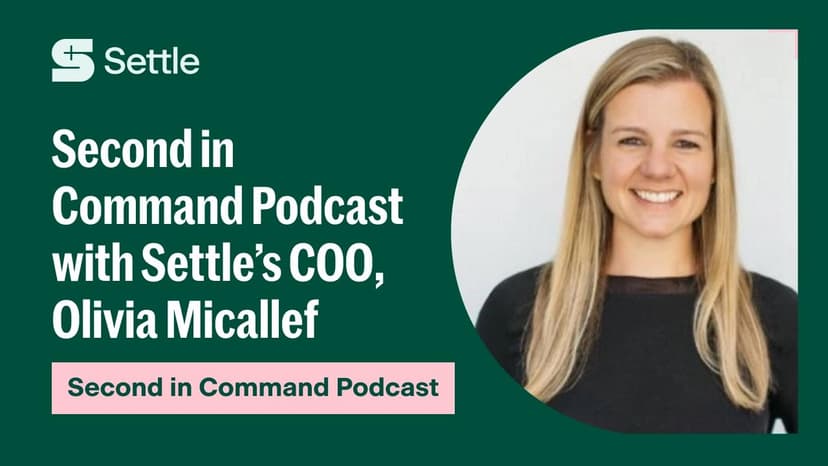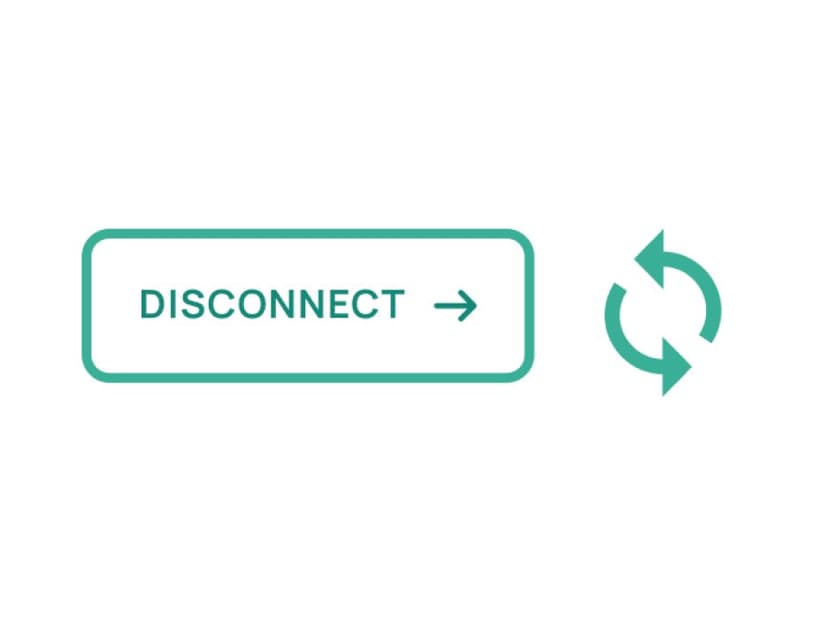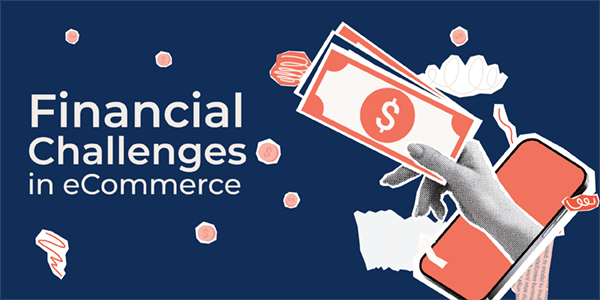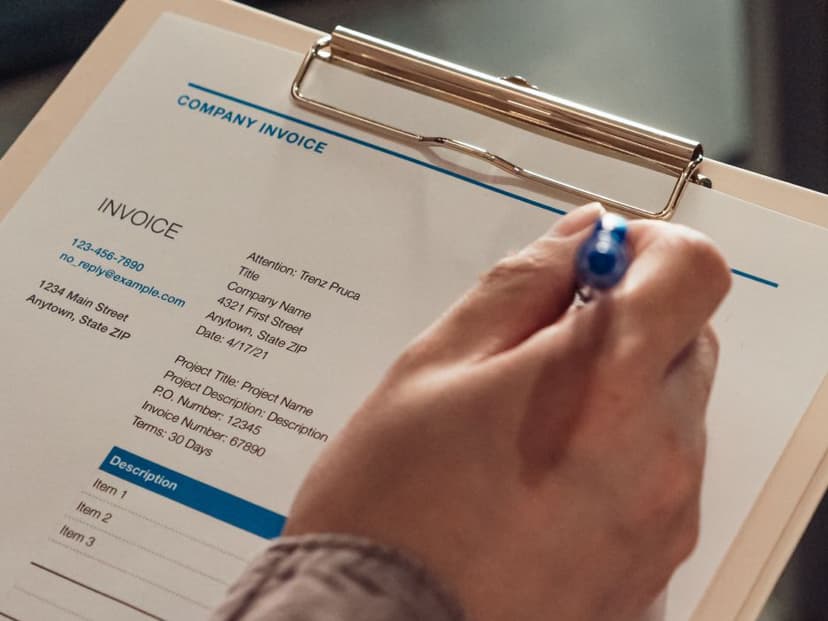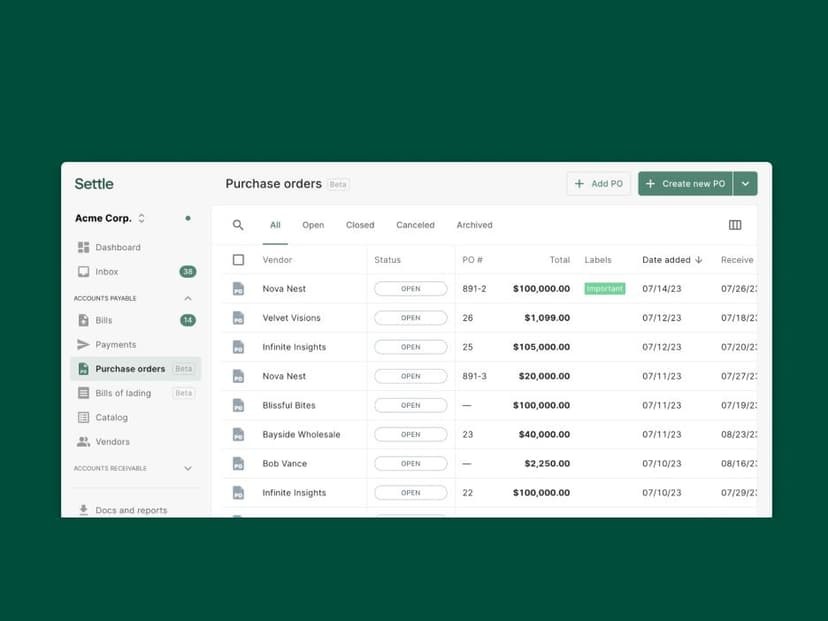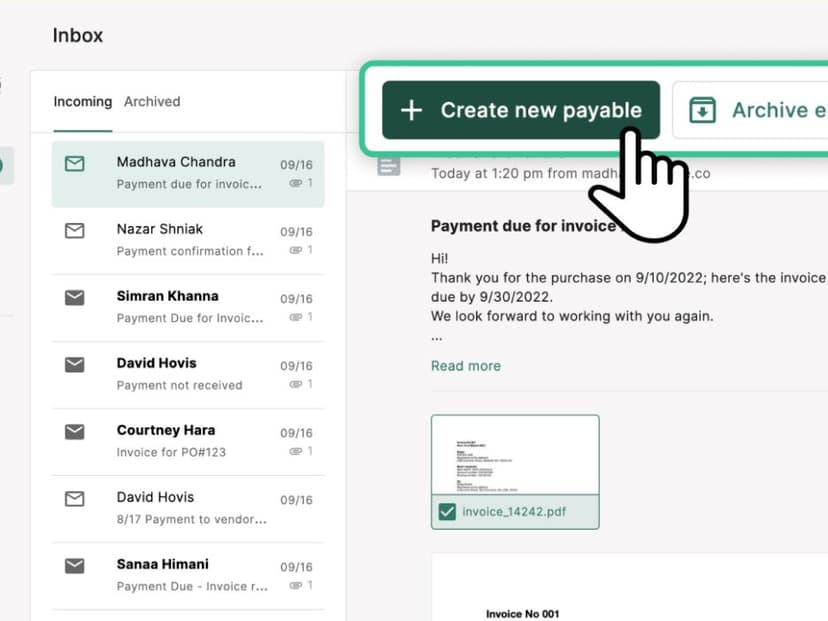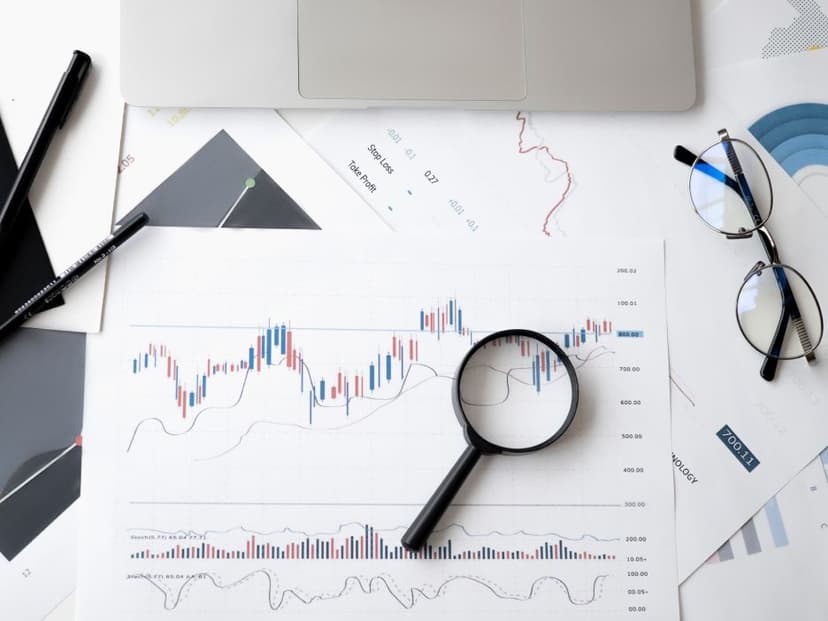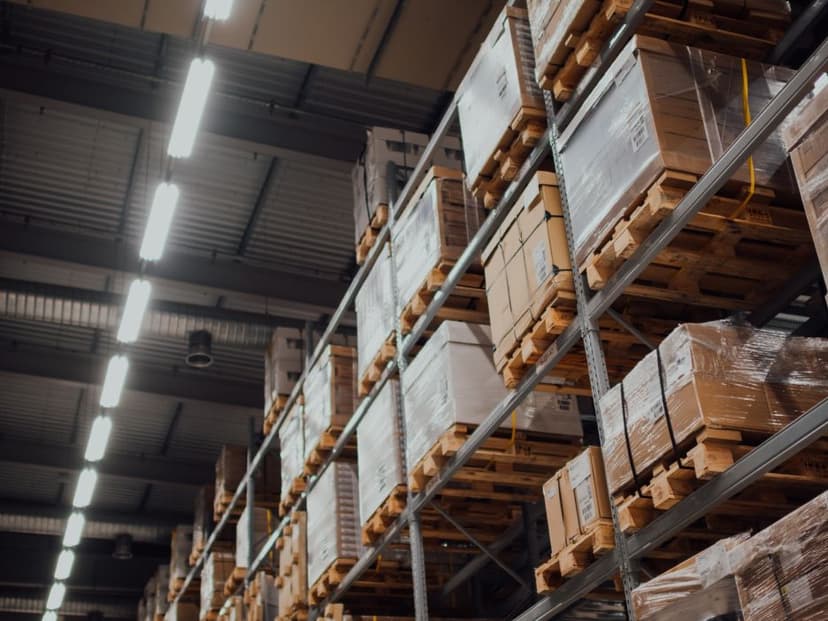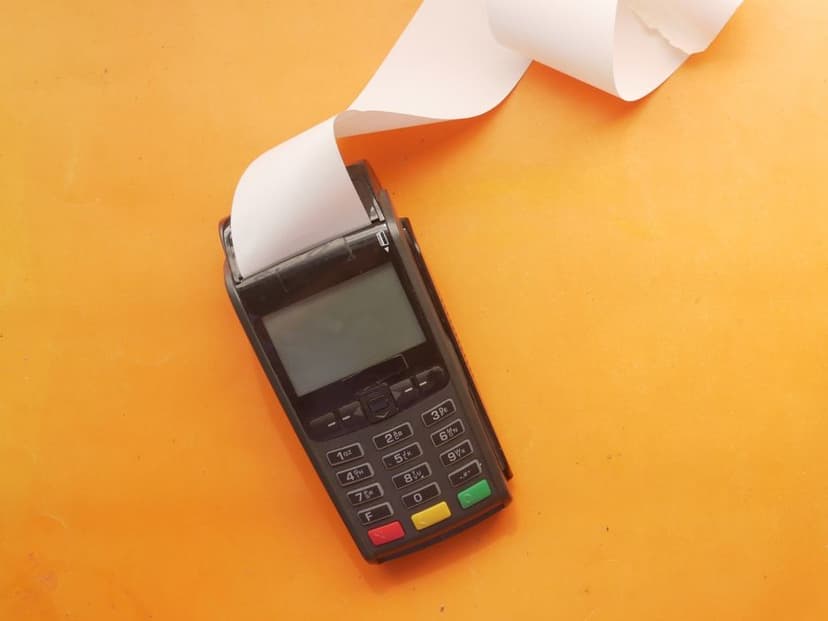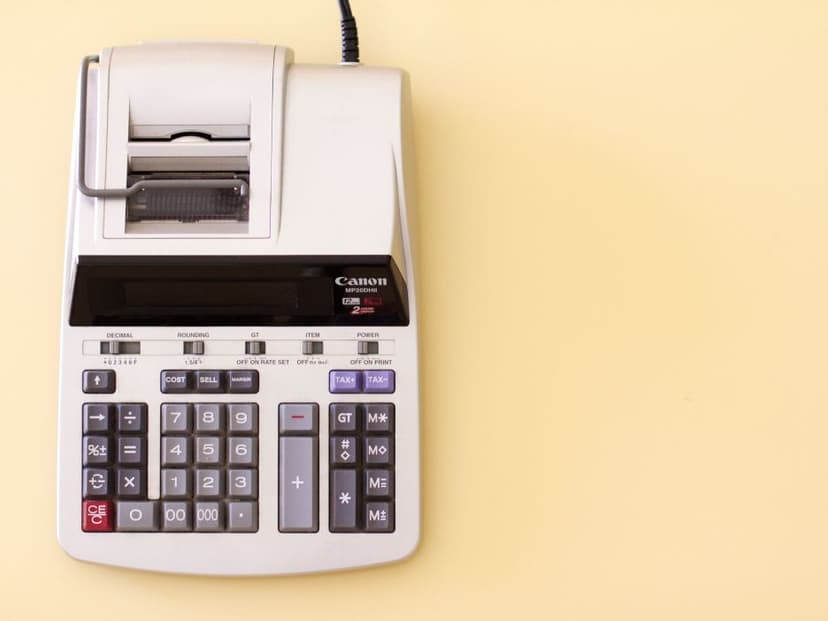For ecommerce brands looking to scale, the right third-party logistics (3PL) partner is more than just a vendor. The right choice keeps operations running smoothly, improves delivery speed, reduces costs, and strengthens customer relationships.
This guide walks through ten unique 3PL providers, outlining their strengths and unique advantages. The goal: to give you the clarity and confidence you need to choose the partner that fits your business best.
1. Shipbob
ShipBob is a global leader in ecommerce logistics with dozens of fulfillment centers across the US, UK, Europe, Australia, and Canada. Their platform is built to support every kind of channel—direct-to-consumer (DTC), business-to-business (B2B), retail dropshipping, and online marketplaces like Amazon and Walmart. Learn more at shipbob.com.
At the core is ShipBob's tech-enabled approach. Using AI and machine learning, the platform analyzes real order data to optimize inventory placement. That means lower shipping costs, faster delivery times, and a better experience for customers.
ShipBob also gives brands complete visibility into their fulfillment operations. The platform integrates directly with major ecommerce systems like Shopify, BigCommerce, Temu, and SHEIN, while providing multi-user dashboards, API-enabled connections, and actionable analytics. This results in fewer errors, greater productivity, and scalable growth.
For brands managing their own warehouses, ShipBob's proprietary warehouse management system (WMS) delivers the same power behind their global network. The cloud-based solution offers real-time inventory tracking, efficient pick-and-pack workflows (batch, cluster, visual packing), and transportation management tools—all designed to keep operations running smoothly. Learn more about their WMS.
Strengths:
- Extensive global 2-day shipping coverage, with 100% 2-day shipping coverage across the contiguous U.S.
- AI-driven inventory optimization that enhances efficiency and reduces costs
- Complete retail EDI compliance and GS1 labeling for streamlined retail partnerships
- Advanced analytics with seamless integrations across major marketplaces and ecommerce platforms
- Cloud-based warehouse management system for both brands and other 3PLs
Advantages:
- Standalone WMS that offers real-time multi-warehouse visibility and shipping tools for brands with their own fulfillment, as well support for hybrid fulfillment strategies (where brands use both their own warehouses and ShipBob's)
- Dedicated support teams available 16 hours a day, 7 days a week via phone, email, and chat
- Proven track record of enabling merchants to excel during peak seasons, with 100% uptime during BFCM
2. Red Stag Fulfillment
Red Stag is a 3PL partner for brands with oversized, heavy, or fragile products. With fulfillment centers in Tennessee and Utah, the company is equipped with reinforced infrastructure and custom packaging solutions designed for high-value, bulky SKUs. Visit redstagfulfillment.com.
Their nationwide model reaches 96% of U.S. households within two days, balancing speed with accuracy. For brands shipping items that require extra care, Red Stag offers the reliability needed to protect both products and customer experience.
Strengths:
- High order and inventory accuracy rates, as well as a high on-time shipment rate
- Fast, 2-day ground delivery for nearly all U.S. households
- "No Shrinkage" guarantee, reimbursing brands for inventory loss or damage
Advantages:
- Offers same-day shipping and inventory receiving guarantees
- A consultative onboarding process that selectively accepts clients to ensure fit
- Specialty in high-touch packaging, kitting, and returns management for large or delicate items
3. eFulfillment Service
eFulfillment Service (EFS) is a family-owned 3PL based in Michigan that focuses on cost-effective solutions for startups and small businesses. Since 2001, they've built a reputation for transparency and flexibility, offering fulfillment without order minimums, setup fees, or long-term contracts. Visit efulfillmentservice.com.
Their single-location model is supported by intuitive software that integrates with major platforms like Shopify and Amazon, giving smaller brands the tools they need to manage fulfillment confidently and affordably.
Strengths:
- Fixed, transparent pricing (no minimums, setup, or hidden fees)
- Highly-rated on local review platforms
- Recognized by Multichannel Merchant magazine as a Top 3PL provider
Advantages:
- Fully owns and operates its Michigan warehouse, ensuring consistent in-house service
- Proven efficiency and cost improvements
- Dedicated account management with "family-like" customer support
4. OC3PL (Orange County, CA)
OC3PL specializes in apparel and light goods fulfillment from its Southern California location, providing same-day order processing and highly personalized service. Their platform integrates directly with Shopify, WooCommerce, and major marketplaces, making operations smooth and reliable for growing brands. Visit oc3pl.com.
OC3PL has a hands-on, boutique approach, which includes dedicated account managers, custom packaging, and apparel returns expertise. Combined with discounted carrier rates and automated logistics tools, this approach gives brands a scalable fulfillment solution without sacrificing control over the customer experience.
Strengths:
- Apparel specialization with real-time ecommerce platform integrations
- Same-day shipping for orders received by midday
- Cost savings via carrier discounts and scalable fulfillment services
Advantages:
- Boutique, brand-aligned packaging and high-touch service
- Direct experience with apparel returns and compliance with retail routing guides
5. Cold Chain 3PL
Cold Chain 3PL is a U.S.-based specialist in frozen and refrigerated logistics, operating facilities in Wheeling, IL, Baltimore, MD, and Pacoima, CA. With over 20 years of experience, they handle cold-storage warehousing, frozen fulfillment, and refrigerated transportation for perishable goods. Their real-time inventory tracking and temperature-controlled infrastructure ensure reliable nationwide shipping while maintaining strict quality standards. Visit coldchain3pl.com.
Strengths:
- Multi-location refrigerated/frozen storage in key regions with full cold-chain capabilities
- Real-time temperature and inventory monitoring across storage and shipping processes
- Decades of experience managing perishable goods with compliance to FDA, USDA, or similar regulations
Advantages:
- Nationwide frozen-goods delivery network
- Specialized kitting, customized packaging, and freight consolidation for temperature-sensitive products
6. ShipCube
ShipCube operates four U.S. fulfillment centers, including locations in New Jersey, Pennsylvania and California, all optimized for fast, accurate fulfillment using automation systems like AS/RS, AGVs, and IoT sensors. Integrating with platforms such as Amazon, Shopify, and Walmart, ShipCube is built for small-to-mid-size DTC brands that want to deliver an Amazon-Prime-level experience to their customers. Visit shipcube.com.
Strengths:
- Automated operations for faster fulfillment
- Platform integrations with Amazon, Shopify, Walmart, carriers, and SAP systems
- Real-time warehouse management with AS/RS, AGVs, and IoT-based inventory visibility
Advantages:
- "Hub-and-Spoke" distribution and pick-to-cart strategies for scalable growth
- Integrated WMS and warehouse execution system (WES) through a supply chain ecosystem partnership (e.g., Softeon)
- Focus on order accuracy, including validation checks and user training
7. Fulex
Founded in 2003 and headquartered in Detroit, MI, Fulex manages four fulfillment centers across Michigan, Tennessee, California, and Texas. Their platform combines warehouse automation with dedicated account support to provide reliable 1-2 day ground shipping for small- to mid-sized DTC and B2B brands. As an FDA-certified and organic handler, Fulex serves apparel, pet, food and supplements, beauty, and electronics brands, delivering speed and specialized care. Visit fulex.com.
Strengths:
- Automated operations with real-time inventory dashboards and lot control tracking
- Nationwide 1-2 day ground delivery using multiple fulfillment centers
- FDA-certified facility, USDA organic handling, and HACCP compliance
Advantages:
- Transparent, all-inclusive pricing covering storage, pick/pack, shipping, and packaging.
- Full service B2B and omnichannel fulfillment—including EDI integration and Amazon FBA prep.
- Personalized support with dedicated account managers and rapid onboarding (~2 weeks).
8. ShipDudes
ShipDudes operates three fulfillment centers—two in New Jersey and one in Las Vegas—delivering a boutique, service-focused experience for mid-market DTC brands and small businesses. Known for their hands-on responsiveness, they provide dedicated account reps, fast turnarounds, and customized packaging solutions that keep brands in control while scaling efficiently. Visit shipdudes.com.
Strengths:
- Personalized service with direct access to account managers
- Quick turnarounds and adaptable fulfillment processes
- Strategic bicoastal presence supporting nationwide delivery
Advantages:
- Boutique-level attention and customized fulfillment flows for mid-sized brands
- Small, agile fulfillment teams capable of adapting to unique brand needs
- Comes with premium support and flexibility
9. DroppLogistics
Dropp Logistics operates a network of four U.S. fulfillment centers totaling around 130,000 sq ft. Their platform focuses on real-time tracking, sustainable fulfillment, and customizable packaging, delivering fast, reliable, and eco-conscious service that supports brands across a range of industries. Visit droppreship.com.
Strengths:
- Real-time inventory and order tracking
- Environmental commitment for eco-conscious brands
- Bicoastal geographical coverage to facilitate optimized distribution and lower shipping costs
Advantages:
- Fully customizable packaging, kitting, and support tailored to specific product needs
- Transparent, flexible pricing model where clients pay for actual usage
- Access to domestic and international shipping, with scalability for growing ecommerce brands
10. Eco Fulfillment (Los Angeles, CA)
Eco Fulfillment, based in Los Angeles, specializes in sustainable ecommerce and B2B fulfillment. Their approach combines recyclable packaging, energy-efficient warehouse operations, and carbon-conscious shipping with a modern WMS that offers real-time inventory, Amazon FBA prep, and Seller Fulfilled Prime capabilities, giving brands an eco-friendly, reliable way to scale. Visit ecofulfill.com.
Strengths:
- Accurate, same-day fulfillment powered by automation and live tracking
- Strong sustainability credentials, including using recyclable materials and investing in energy-efficient operations
- Seamless ecommerce integrations
Advantages:
- Eco-centric commitment for sustainability-focused businesses.
- Single-site agility in Los Angeles, CA, providing strong regional speed and international shipping options
Key takeaways
Here's a snapshot of these top 3PL providers and why they stand out:
ShipBob - Industry-leading fulfillment with 60+ fulfillment centers for global scaling, a powerful tech stack, omnichannel support, and a standalone WMS.
Red Stag - Ideal for handling oversized/fragile items with near-perfect accuracy and 2-day delivery.
eFulfillment Service - Startup-friendly 3PL with no minimums, transparent pricing, and family-level service.
OC3PL - Boutique apparel specialist offering same-day fulfillment.
Cold Chain 3PL - Refrigerated and frozen storage with a temperature-tracked cold-shipping network nationwide.
ShipCube - Automation-led operations for mid-size DTC brands with near-Prime delivery standards.
Fulex - Tech-enhanced, scalable 3PL with FDA/organic handling.
ShipDudes - Boutique, high-touch service with dedicated account attention.
Dropp Logistics - Eco-oriented 3PL with real-time tracking and eco-conscious packaging.
Eco Fulfillment - Sustainable, eco-first service from an LA-based team.
No matter your priorities—heavy-duty packing, temperature control, sustainable operations, tech-driven scalability, boutique service, or startup-friendly flexibility—choosing the right 3PL ensures your business can grow faster, delight customers, and save on costs.
Don't rush: The cost of a mismatched 3PL
Choosing the wrong 3PL can create a domino effect of issues—hidden fees, late shipments, inventory mishandling, and, most importantly, damage to your brand's reputation. Most customers won't come back after a single bad experience, and a poorly managed partnership can erode both trust and profitability.
Not all 3PLs are the same, and cost shouldn't be the only factor in your decision. Onboarding expertise, scalability, and technology alignment are just as critical for long-term success and form the foundation of any lasting fulfillment partnership.
Final thoughts
Take the time to understand your current logistics challenges and future goals. Once you know what you need, research and invest in a fulfillment partner with the experience, infrastructure, and capabilities to support your business.
When evaluating potential partners, make sure you:
- Review case studies to see if they've successfully worked with brands like yours.
- Check certifications, especially if you handle consumable or perishable products.
- Calculate all-in costs, including hidden or extra fees.
- Consider onboarding plans and timelines to ensure a smooth transition.
- Evaluate technology fit to confirm their systems integrate with your existing tech stack.
Doing this due diligence upfront pays off with smoother operations, happier customers, and scalable growth for your business.
Once you've chosen your 3PL, it's super important to choose an inventory management system built for streamlining CPG brands' operations. Learn more about how Settle helps brands like Branch, Curie and MadHappy scale, save time and money every month.


